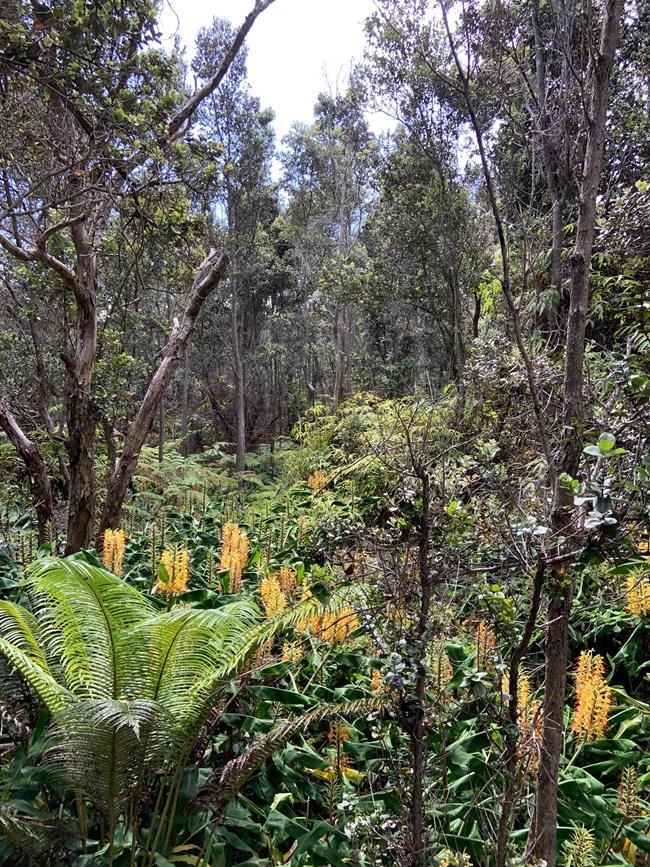Last updated: March 10, 2021
Article
Scientists Examine Why Some Pacific Islands National Parks Have More Non-native Plants than Others

NPS
Invasive species represent one of the main threats to vulnerable island biodiversity. But why do some national parks in the Pacific Islands have more non-native plant species than others? To answer this question, scientists evaluated how non-native plant populations changed across the widely varying environmental conditions within national parks on the islands of Taʻu and Tutuila of American Samoa and Maui, Molokaʻi, and Hawaiʻi in the Hawaiian archipelago.
To establish and spread in native forest communities, non-native plant species have to overcome several factors, such as reaching the island, and then competing for resources against native communities. Once established, reproduction and growth rates can vary widely and can represent rapid change to the character of a habitat. Understanding how non-native species invasions vary between small tropical islands, and which conditions are most suitable for reproduction is critical to managing this threat.
By comparing abiotic (non-living) and biotic (living) factors across a large swath of the Pacific, National Park Service (NPS) scientists were able to discern some of the major influences on non-native plant species spread. First, the Hawaiian archipelago displayed more non-native plants than the American Samoa archipelago. One possible explanation for this discrepancy is that more isolated islands (further from other land masses) tend to be more susceptible to invasion by non-native species, and Hawaiʻi is more geographically isolated than American Samoa. At the same time, with the advent of contemporary travel and commerce, Hawaii has a far greater number of ships and planes visiting its shores. A second ecological variable is that elevation had a negative effect on non-native plant coverage and richness; higher elevation areas were observed to have fewer non-native plant species. Small populations, however, are able to establish in high elevation, therefore giving the potential for quick increase in cover if these areas are disturbed in some way (e.g., hurricane or fire) that removes native plant cover. Finally, because many invasive species are light-demanding, areas with plenty of shade (such as dense native canopy areas) were more resistant to invasion. Higher light availability generally results in a higher degree of non-native invasion at forest edges or canopy gaps.
In conclusion, elevation was the most important factor associated with both the number of non-native plants in an area (species richness), as well the size of the area covered by a species. Canopy height and tree density were not associated with lower non-native species richness but rather with reduced non-native species coverage. This study was unique because the data collected by the NPS Pacific Island Inventory & Monitoring Network (PACN) allowed for both species richness and species coverage to be assessed simultaneously across the Pacific Islands, representing an overall area larger than the mainland United States. The researchers acknowledged that other factors not examined in the study are also contributing to non-native plant species patterns and PACN continues to examine trends in these species and the factors that drive such trends—we're only scratching the surface!
For more information
- Ibanez, T, Hart, P, Ainsworth, A, Gross, J, Monello, R. Factors associated with alien plant richness, cover and composition differ in tropical island forests. Diversity and Distributions. 2019; 25: 1910– 1923. https://doi.org/10.1111/ddi.12989
